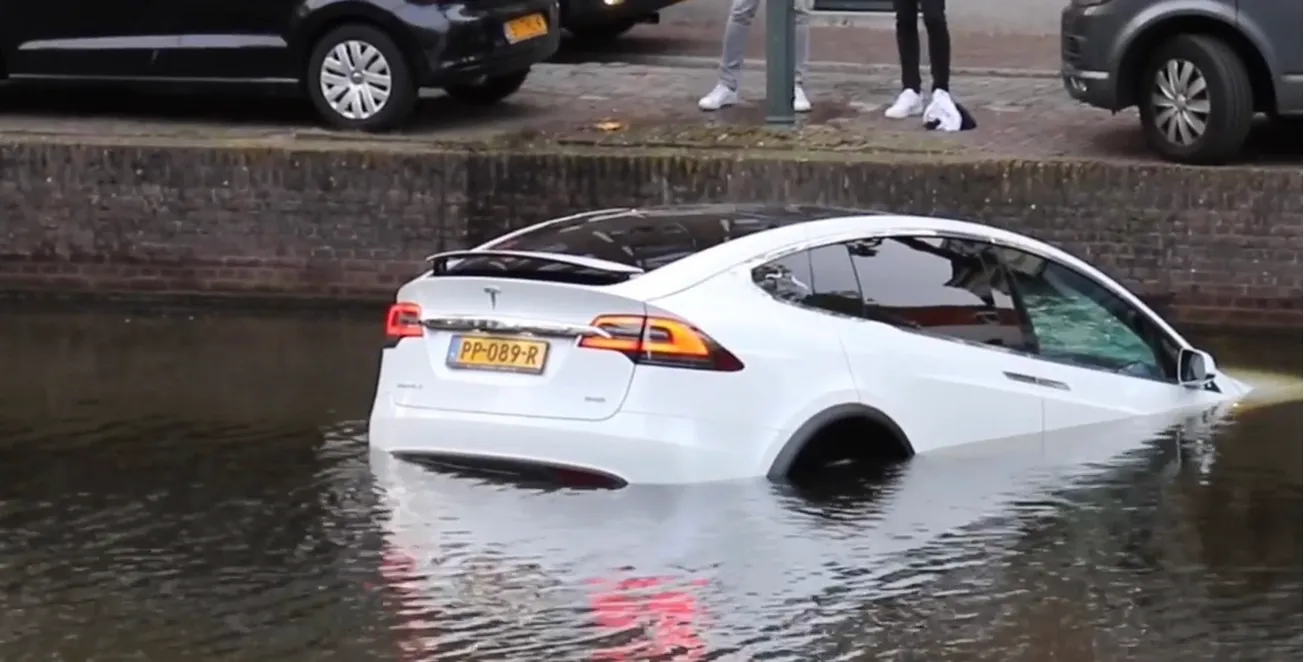Table of Contents
How to Explain a Tesla to an Eleven-Year-Old
It’s a conversation I’ve had with my eldest son several times, almost always on our bike ride to his elementary school.
He sees the white Tesla, which slips past us almost silently, and pulls up to the curb outside the schoolyard. Falcon-wing doors flip open (this particular model channels the DeLorean, for some reason), often making the students using the sidewalk swerve to avoid getting bonked in the head1. A bearded father in tight jeans gets out, ushers his kids towards the school door, and then glides off, apparently into a self-satisfied future.
I have to admit, there’s a certain Jetsons-style panache to the whole scene.
“But electric cars are better than regular cars, aren’t they, Dad?” my son will ask me. “I mean, not so polluting?”
Long pause.
“Well, they don’t put out so much smog. That’s good, I guess. But there’s some big problems with them.”
The EV conversation, it turns out, is a long one, and tough to complete on the way to school. (Much less on the way home—we’re too busy staying alert to avoid being hit by rush-hour crazed drivers.) I’ll be having it with my kids over the next several years, and it will get a little more sophisticated as their capacity to understand the world grows. It’s going to go something like this:
Electricity is great! Much better than burning fossil fuels. There’s less black smog coming out of the tailpipes, which makes you and your friends who have breathing problems choke. And we happen to live in one of the few places in the world where electricity comes from water, in the form of hydro dams, rather than fossil fuels. That could change in the future—the rest of the world is making some progress to generating electricity with solar, wind, and renewables. But it’s still got a long way to go. As a global average, two-thirds of the electricity that powers EVs comes from fossil sources. So you may not see smoke coming out of the back of an electric car, but, in most of the world, it’s going up into the air somewhere else2.
And there’s more than one kind of pollution, I’ll have to add. Smog is awful, but there are these tiny particles, called PM2.5, that can even slip through masks, and they get deep into your lungs. They cause terrible diseases! Electric vehicles’ brakes produce less of those PM2.5s than regular cars’ brakes, (it’s complicated, they use something called “regenerative braking,” I’ll explain later!) but because they’re heavier, their tires cause more pollution from these tiny particles. Also, they’re so heavy that they wear down the roads faster, and that costs us all—oh, wait, I better do the whole cost-to-society talk later…

Then we have to think about where the things that make those heavy cars come from. They run on batteries, which require lithium and copper, and those things have to be dug out of the ground. The problem is, ripping up the earth wrecks people’s lives. And those people usually don’t have a lot of money. My friend Vince Beiser—remember him?—just got back from Chile where he saw how people were suffering, thanks to giant open-air mines, so people here can drive Teslas and other electric cars. And I know that you don’t think it’s right that anybody should suffer, just to make a bunch of people who are already comfortable a little more comfortable.3 That’s just wrong.
“But they’re still better than gas cars, right? It will be better when all the cars in the world are electric.” We always come back to that. It’s the Hot Wheels defense—because, after all, cars are objects of desire. And very few of us, myself included, are immune to the appeal of cool design.
Like I said, it would be better if more transportation was electric, especially if more of our electricity came from wind or solar. But do you know how many cars there are in the world? 1.4 billion. And how many of them are electric? 26 million. So, everybody thinks we can just keep driving, because soon everything will be electric. But we’ve been talking about this since you were born, almost 12 years ago, and still only 2 of every 100 cars in the world is electric. It’s a nice idea to say that everything will be OK—we’ve got the flood, wildfire, collapsing ice-shelf and heat-wave problems beat thanks to electric cars!—but at the rate we’re actually going, there’s no real change happening at all.
The last point is at once the easiest, and the hardest, to make. As a family, we don’t own a car, so our boys see the world from the point of view of transit-riders, pedestrians, and cyclists. They feel, in a very visceral way, how threatening the streets around them are thanks to rushing cars and trucks. They know that people are killed at an alarming rate by automobiles4. (And our youngest son still almost always gets carsick; that doesn’t happen on a train.) What is harder to explain is how the world around them—especially outside our pretty walkable neighborhood—was formed by the logic of car-dependency.

One of our strategies is to show them places—from hill-towns in Italy to bicycle routes through Quebec’s Laurentian Mountains—to let them see how great the world can be where cars aren’t allowed.
Sprawl, urban freeways, endless acres of concrete, time lost in traffic jams and walking across shopping-mall parking lots, everything that ruins our days—that’s all down to cars. The bigger picture, the fact that transportation decisions (building for the needs of cars) are actually land-use decisions, takes longer to see. And a global transition to electric cars won’t change any of that. It just slots new tech into the place of old, so we can continue doing the same-old, same-old. It’s lazy, technophilic, 20th-century thinking—Muskism at its worst—and it’s got to change.

I always end with this: “Your Dad isn’t against new technology. In fact, I love electricity5 and EVs! For example, electric-powered trains—like Montreal’s métro, and that cool new REM train we took Brossard. Or those trams and light-rail trains we’ve ridden in Vancouver, and Ottawa, and Rome. And I’ll admit, even though I love my road bicycle, e-bikes can be pretty great, too. (And, yes, I will let you use an electric Bixi, as long as you promise to stay on the bike path!)”
Along with several other parents, we’ve been trying to turn the dangerous, car-dominated street alongside our school into a real, European-style “School Street,” closed to cars. You can read more about our struggles, and the intransigence of the local borough, here. ↩
"EVs in Norway and in the Canadian provinces of Manitoba and Quebec are charged by pure hydroelectricity, making them utterly clean hydro-cars,” writes Vaclav Smil, the clear-eyed University of Manitoba energy expert. “But in most of India…China, and Poland, EVs are overwhelmingly coal cars. The last thing we need to push for the rapid introduction of a source of demand that would summon even more fossil-fuel-based electricity generation.” For a rational defense of electric cars, I suggest you check out Auke Hoekstra, in this thread on (shudder) X. ↩
It’s a little early for reading Ursula K. Le Guin’s “The Ones Who Walk Away from Omelas,” but we’ll get there. ↩
About 45,000 a year in Canada and the U.S. now, an increase driven by distracted drivers and heavier trucks and SUVs; 1.3 million a year around the world. ↩
Makes me think of the ol’ Woody Guthrie lyric: “ Don’t like dictators none myself / Then I think the whole country should be run by … electricity!” ↩






